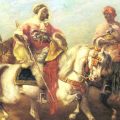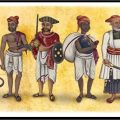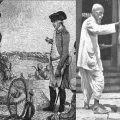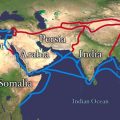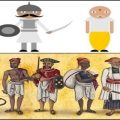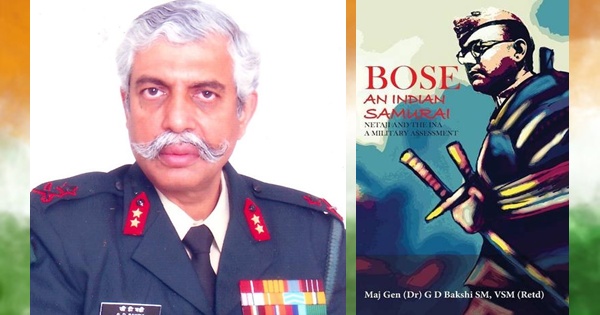300 BC Book ‘Indica’ by Megasthenes Dispels Caste Theories of India
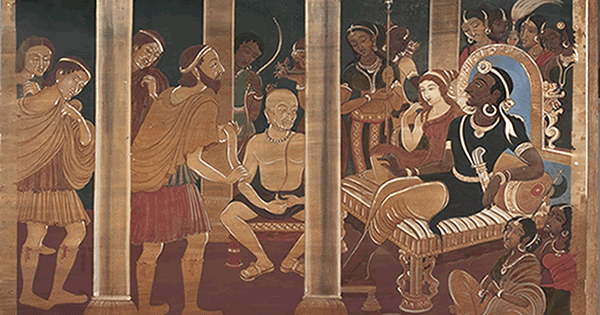
Indica is the book written by Megasthenes, the Greek ambassador to India around 300 BC. The book is lost, but various other authors quote his book. Another book with the same name, Indica by Arrian survives. Note the book is written as a military journal to know the country, hence the data has to be as “factual” as possible, to avoid errors in costly military strategies. Also it is an addendum (not the main subject) written as part of Alexander’s conquest.
As the main objective was on Alexander, there is no reason to fudge data about India. Alexander turned back from India after his peace treaty with Porus (As Porus was re-instated, it is a definite peace). Victor usually writes History for his advantage. As there is no victory or loss, as far as India is considered during Alexander’s conquest, the history recorded can be considered at best as a neutral and third party observation without any bias.
Purpose of writing Indica by Arrian:-
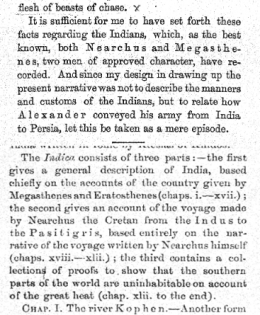
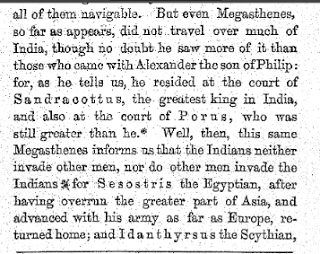
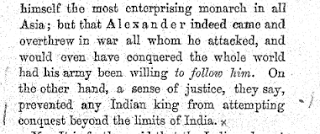
Indians/Hindus never tried to conquer other lands by force.
3) After several years, the royal rule was replaced by democratic city states, although there existed a few kings when Alexander invaded India.
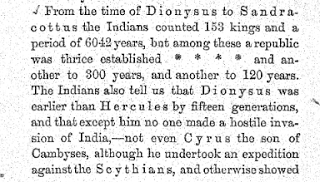
4) The Indian warriors regarded those engaged in agriculture and animal husbandry as sacred. Unlike the warriors in other countries, they did not ravage farms during war conquests. Moreover, the warring sides never destroyed the enemy land with fire or cut down its trees.
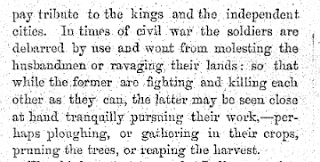
5) The Indians generally were divided into seven categories, the wise men (Brahmins), farmers, herdsmen, artisans, soldiers, over lookers, and government officials including army and navy officers.
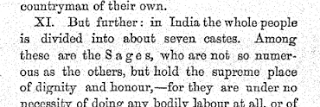
B) Farmers/ Husbandsmen – Most numerous of all castes, exempted from fighting and other public duties. Regarded as public benefactors, and protected from damage during wars, even by enemy warriors. Pay a land tribute to the ruler, the official land owner (Property tax). In addition, they remit 1/4th of their produce to the state treasury. Tax was capped at 25%, unlike today’s 35-80% by modern Govts.
D) Artisans and Traders (Vysya) – Create weapons as well as tools for farmers and others. People engaged in military service were exempted from paying taxes, and instead receive a maintenance from the state exchequer.
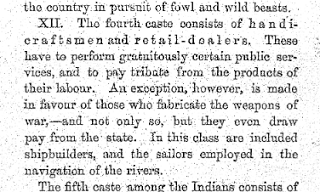
Artisans were supported by Govt. for the service provided to military. The life of artisans was secured. Traders/Vysyas held money power, but no support from public (man power) and no muscle power. So, they were not in a position to “Legislate”.
E) Military (Kshatriya) -> Second most numerous among the castes, Indulge in amusements and idleness during peaceful times, maintained at state expense, along with war horses and elephants. Army was used in peace times too. It was maintained by the govt. They were powerful physically, but played no role in making rules.
G) Councilors and Judicial Assessors (Legislators) – Composed of wise people with good character,Deliberate on public affairs; included the royal advisers, state treasurers, dispute arbitrators; the army generals and chief magistrates also usually belonged to this class, Least numerous, but most respected.
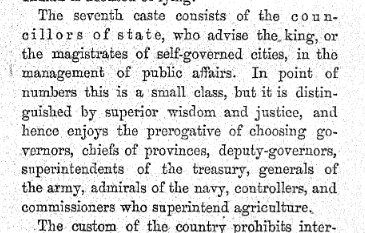
This class was derived from all other communities based on talent. They were a body of intellects with no physical power, money power or people power. So, they could gang up and exploit others. They acted as balancing power for other sects (Intellectualism of Brahmins, money power of Vysyas, Muscle power of Kshatriyas and manpower of artisans and farmers). This was the democratic body.
The division was so perfect. It was not possible for one group to dominate all others and exploit. The “perfect division” meant, optimization and rationalization of resources, labor and benefits. The optimization reduced burden and enabled low cost in manufacture, enabling competitiveness of the country. That was why India dominated world trade. This was what Greeks learnt from India 1000s of years back.

Due to mentioning of 7 classification (rather than 4 varnas used in casteist arguments) and documenting India as a free society, Megasthenes’ Indica expose “Britishers”, “Leftists historians” and Indian press, who repeatedly told the lie of “casteist system” to de-mean and subjugate Indian citizens. It is a shame, “Independent India” still teaches these lies in school even today, in spite of strong proof against the “exploitative caste theory”.
Actually the grouping has not changed much. Just look at the classification with modern names:-
A) Brahmins (non-profit group): Journalists (not media barons), Strategists, People in Religious bodies (all religions), NGOs, Artists (like musicians, painters, architects), scientists, teachers.
B) Farmers
C) Herders:- Animal Husbandry, part of farmer community only
D) Artisans :- Industrialists (non govt), Workers, Medical professionals, Engineers
E) Military:- Military, Police and Special forces
F) Overseers :- Govt Workers, Administrators and Traders
G) Councilors & Judicial Assessors (Politicos & capitalists): Politicians, Investors, Barons, Landlords, Mafia dons, Celebrities (sports & Cinema), Pseudo Intellectuals, Judges and all elites (VIP, VVIP and HNI’s)
Note, how, scope of group “G” is altered. What was a body with “talents” was replaced by vested interests. People with at least “one power” (muscle, men, money and intellectuals) can join the gang to gang up against the rest. This collusion allows exploitation of all other groups. Note how, incompetence is creeping in the societal order, increasing burden on people. The burden also means increased cost, enabling downfall of our country. Britishers employed this trick first in killing cotton industry of India. They levied heavy taxes and started disrupting the labor force. Indian hegemony in world economics nose dived from that point.
To regain the “Leadership position”, Indians should think of correcting “group G” again. It will set the social order back to optimal point. The optimal point will reduce the peoples’ burden and solve peoples’ problem. Most of the litigations are land disputes. If that is solved, huge burden and liability on Indian citizens gets solved. It will unlock the black money hoarded there for industrial development. This is the learning we should get from “True History” documented in Megasthenes’ Indica.
Featured image courtesy: elinepa.org
Disclaimer: The views expressed here are solely of the author. My India My Glory does not assume any responsibility for the validity or information shared in this article by the author.
Visit the author’s personal blog to read more of his posts.
More Posts:
1. Nalanda: 9 Million Books Burnt in 1193 by Bakhtiyar Khilji.
2. Aryan Migration Theory: Fraud and Confusion Created to Justify British Rule in India
3. Most Authentic History of Attacks on India from 636 AD: Hindus Killed in Millions

